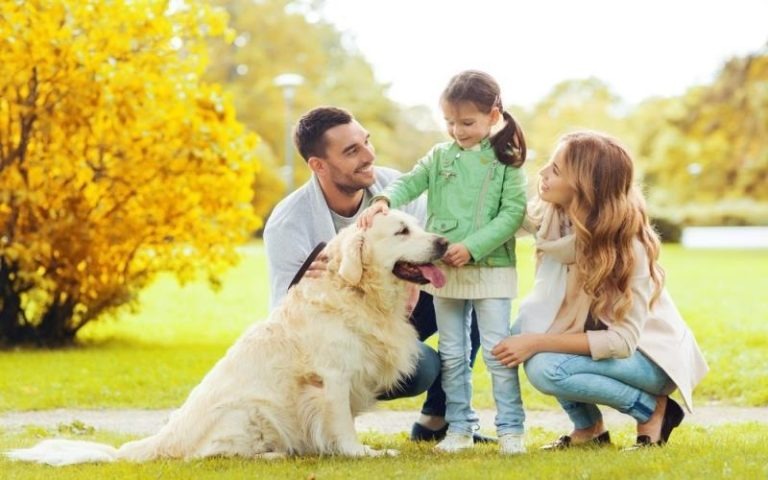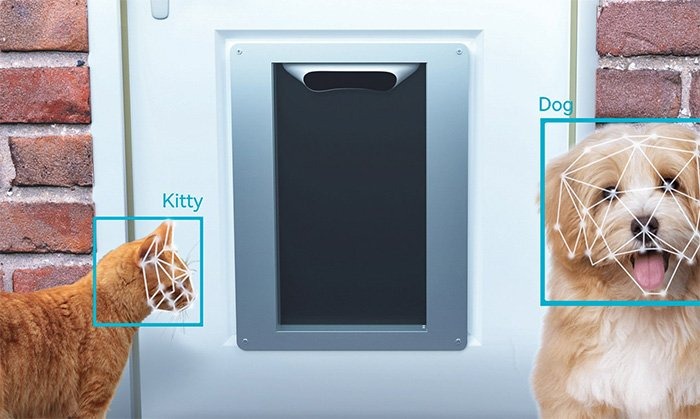
Behavioral differences in cats/dogs raised indoors vs outdoors in urban India.
“Exploring how urban environments in India shape the behavior of cats and dogs, this article examines the differences between pets raised indoors versus outdoors, highlighting the impact of safety, space, socialization, and human interaction on attachment, independence, aggression, and overall well-being, while offering insights into optimal hybrid lifestyles for healthier, happier, and behaviorally balanced companion animals.”
🐶 Pet Star
45 min read · 22, Sep 2025

Introduction
In India, the relationship between humans and companion animals such as cats and dogs is centuries old, yet the contexts in which these animals are raised have changed dramatically in recent decades. With rapid urbanization, increasing apartment-style living, and growing concerns about safety, disease, and animal welfare, the environments where cats and dogs are raised—indoors or outdoors—play a critical role in shaping their behavior.
This article explores in detail the behavioral differences observed in cats and dogs raised indoors versus outdoors in the unique context of urban India, where culture, environment, and socio-economic factors intersect to influence pet-keeping practices.
1. Indoor vs. Outdoor Rearing Environments in Indian Cities
Indoor Rearing
- Typically seen among middle- and upper-class families in metropolitan areas like Delhi, Mumbai, Bengaluru, and Hyderabad.
- Pets are kept inside apartments or gated houses, with limited outdoor access.
- Activities include supervised walks (for dogs), interactive play sessions, and indoor enrichment toys.
- Diets are often controlled, with commercial pet food or home-cooked meals.
Outdoor Rearing
- Common in semi-urban neighborhoods, independent houses, and colonies with open yards.
- Dogs often live in verandas, gardens, or courtyards, sometimes tethered for security.
- Cats may roam freely in and out, hunting small prey and interacting with street cats.
- Feeding is less structured, often a mix of leftovers, milk, or neighborhood contributions.
2. Behavioral Patterns in Indoor vs. Outdoor Dogs
2.1 Indoor Dogs
- Attachment and Dependency: Indoor dogs often develop strong bonds with family members. They exhibit higher dependency, seeking attention and constant interaction.
- Play and Stimulation Needs: Limited exposure to the outdoors increases the need for toys, puzzle feeders, and structured playtime. Without stimulation, they may show destructive chewing or barking.
- Separation Anxiety: More common in indoor-raised dogs, especially in nuclear families where owners leave for long work hours. Symptoms include excessive barking, pacing, or inappropriate urination.
- Socialization Challenges: Dogs restricted to indoor environments often encounter fewer humans and animals. This may result in shyness, fear, or even aggression during rare outdoor encounters.
2.2 Outdoor Dogs
- Territorial Behavior: Dogs raised outdoors are more likely to display guarding and territorial instincts, barking at strangers, or patrolling their yards.
- Independence: Outdoor dogs are generally less clingy. Their partial exposure to street life makes them more adaptable to uncertainty.
- Higher Aggression Levels: Outdoor dogs, particularly if tethered or exposed to street dogs, may become reactive and aggressive due to constant territorial defense.
- Better Physical Fitness: Outdoor-raised dogs get more space to move, run, and explore, often resulting in higher stamina and muscle tone compared to sedentary indoor dogs.
3. Behavioral Patterns in Indoor vs. Outdoor Cats
3.1 Indoor Cats
- Bonding and Dependence: Indoor cats can become affectionate lap companions, relying on humans for food, play, and security.
- Play-Hunting Behavior: Since natural hunting is absent, they redirect instincts toward toys, shadows, or furniture.
- Stress and Boredom: Without stimulation, they may overeat, scratch furniture, or develop repetitive behaviors like over-grooming.
- Reduced Aggression: Indoor cats are generally calmer, as they avoid the territorial fights common among street cats.
3.2 Outdoor Cats
- Hunting and Predatory Instincts: Outdoor cats in Indian cities often hunt rats, pigeons, or lizards, keeping their natural instincts sharp.
- Territorial Fights: More prone to aggressive encounters with other street cats, leading to injuries, infections, and stress.
- Independent Nature: They are less dependent on owners, sometimes disappearing for hours or days.
- Exploratory Behavior: Outdoor cats display higher curiosity and adaptability to urban chaos, traffic, and human interactions.
4. Urban Indian Context: Cultural and Environmental Factors
Safety Concerns
- Indoor pets are perceived as safer from accidents, theft, or poisoning.
- Outdoor dogs and cats often face risks from traffic, dogcatchers, or hostile neighbors.
Social Attitudes
- In many Indian neighborhoods, dogs raised outdoors double as guard animals.
- Cats roaming outside may be tolerated, but they risk being mistaken for strays.
Climate and Space Constraints
- Urban heat, monsoons, and cramped apartments push families to raise pets indoors.
- Independent houses with yards in tier-2 cities encourage outdoor rearing.
Veterinary and Welfare Aspects
- Indoor-raised pets often receive better veterinary care, vaccinations, and grooming.
- Outdoor pets, while hardy, face higher disease exposure (ticks, rabies, feline infections).
5. Psychological Well-Being
- Indoor Pets: Benefit from security and comfort but may suffer from boredom and anxiety.
- Outdoor Pets: Enjoy natural exploration but endure stress from conflicts, weather, and inconsistent food sources.
- Balanced Approach: In many Indian families, pets enjoy “semi-indoor” lives—spending nights indoors and days exploring gated compounds.
6. Case Studies
Case 1: Indoor Dog in Mumbai Apartment
A Labrador in a high-rise spends most time indoors with two daily walks. Exhibits playful dependency, separation anxiety, and occasional weight issues due to lack of space.
Case 2: Outdoor Dog in Delhi Suburbs
A German Shepherd kept in a yard shows strong guarding behavior, barks at neighbors, and displays independence. However, it is prone to tick infestations and aggressive encounters with strays.
Case 3: Outdoor Cat in Chennai
A free-roaming cat hunts rats in the colony, visits multiple homes for food, and shows minimal bonding with owners. Suffers occasional injuries from street fights.
Case 4: Indoor Cat in Bengaluru
A Persian cat raised entirely indoors is affectionate but prone to obesity and furniture scratching, requiring constant enrichment.
7. Comparative Behavioral Matrix
Behavior Aspect Indoor Dogs Outdoor Dogs Indoor Cats Outdoor Cats Attachment High Moderate Moderate-High Low Aggression Low-Moderate High Low High Physical Fitness Lower Higher Lower Higher Socialization Limited Broader but reactive Limited Broader but territorial Anxiety/Stress Higher indoors Higher outdoors (different triggers) Boredom-related Fight-related Independence Lower Higher Lower Higher 8. Finding a Middle Ground
In Indian urban settings, many pet owners now adopt a hybrid approach:
- Indoor housing for safety and comfort
- Scheduled outdoor playtime or leash walks
- Enrichment strategies indoors like climbing towers for cats, puzzle feeders, or training games for dogs
- Community support models where colony animals are partially adopted, fed, and sterilized
In urban India, where rapid modernization has altered lifestyles, the environments in which cats and dogs are raised—indoors versus outdoors—deeply shape their behavior, emotional needs, and social interactions, with each environment offering advantages and challenges that reflect both human choices and urban constraints; indoor-raised dogs in Indian cities such as Delhi, Mumbai, or Bengaluru typically live in apartments or gated homes where their activities are structured around daily walks, supervised play, and owner interaction, which fosters deep attachment and dependency, sometimes leading to separation anxiety when owners are away, whereas outdoor dogs, common in semi-urban or independent houses, often live in verandas or yards and display stronger guarding instincts, higher territorial aggression, greater physical fitness, and relative independence, though at the cost of exposure to diseases, parasites, and conflicts with stray dogs; similarly, indoor cats raised in flats or gated communities often develop affectionate bonds, redirect their natural hunting instincts toward toys or furniture, and may suffer from boredom, obesity, or repetitive behaviors like over-grooming, yet they remain calmer compared to outdoor cats who roam freely, hunt urban pests such as rats or pigeons, display higher independence, and frequently engage in territorial fights with street cats, which sharpens their predatory skills but exposes them to injuries and infections; in the Indian context, cultural attitudes also shape these behaviors, since many families still view outdoor dogs as guard animals and tolerate free-roaming cats as semi-strays, while middle-class and affluent urban households prefer keeping pets indoors due to safety, hygiene, and emotional bonding, although this leads to new behavioral challenges like anxiety or destructive tendencies if enrichment is inadequate; veterinary and welfare aspects further underline the difference, as indoor pets usually receive vaccinations, grooming, and structured diets, while outdoor pets often rely on leftovers or neighborhood feeding and develop resilience at the expense of long-term health; psychological well-being diverges as well, since indoor pets enjoy comfort and safety but risk stress from confinement, while outdoor pets benefit from natural exploration but endure uncertainty, noise, weather, and social conflict, with a growing number of Indian families now adopting a hybrid approach—keeping animals indoors at night for safety but allowing controlled outdoor activity during the day, or building enrichment routines like climbing towers for cats and training games for dogs to mimic outdoor stimulation; case studies highlight these contrasts vividly, with a Labrador in a Mumbai flat developing dependency and weight issues despite affection, a German Shepherd in Delhi’s suburbs thriving on guarding instincts but suffering tick infestations, a Chennai colony cat displaying independence but facing frequent injuries, and a Persian cat in Bengaluru being affectionate yet prone to obesity and scratching, all of which reveal the behavioral spectrum created by environment; overall, the behavioral matrix shows that indoor pets are more attached but less fit, prone to anxiety and boredom, while outdoor pets are fitter, more independent, and exploratory but aggressive, less socialized with humans, and vulnerable to environmental dangers, pointing to the conclusion that neither extreme—fully indoor nor fully outdoor—provides optimal well-being in the urban Indian context, and that a balanced semi-indoor lifestyle, with indoor safety paired with outdoor exercise, controlled socialization, and enrichment strategies, ensures healthier, happier pets who can thrive in India’s dense, diverse, and sometimes chaotic urban landscapes.
In urban India, the behavior of cats and dogs is profoundly shaped by whether they are raised indoors or outdoors, reflecting a complex interplay of environment, human interaction, urban lifestyle, safety concerns, cultural attitudes, and socio-economic factors, as indoor pets, often kept in apartments or gated homes in cities like Mumbai, Delhi, Bengaluru, and Hyderabad, tend to develop strong attachment to their owners due to constant human presence, structured feeding routines, and limited exposure to other animals or external stimuli, resulting in dogs that are affectionate, highly dependent, and prone to separation anxiety when left alone for long periods, sometimes manifesting as excessive barking, pacing, or destructive chewing, while indoor cats, though generally calmer and less aggressive than their outdoor counterparts, may exhibit boredom-related behaviors such as over-grooming, scratching furniture, or playing obsessively with inanimate objects to channel their natural hunting instincts, and both indoor dogs and cats may experience lower physical fitness unless provided with adequate play, mental stimulation, and supervised walks or interactive toys, whereas outdoor-raised pets, such as dogs living in yards, verandas, or semi-open spaces in suburban areas or tier-2 cities, develop greater independence, territorial instincts, and physical robustness due to exposure to environmental challenges, freedom to patrol and explore, and interactions with stray or neighborhood animals, which often leads to higher aggression levels, guarding behavior, and situational reactivity, as well as increased risk of injury, parasite infestation, and disease, while outdoor cats, roaming freely in urban colonies, demonstrate heightened curiosity, predatory efficiency, and adaptability to urban chaos, hunting rats, birds, or insects, engaging in territorial disputes with other cats, and maintaining a lifestyle that fosters independence and survival skills but exposes them to stress from fights, injuries, unpredictable weather, and inconsistent food sources; cultural context in India also plays a crucial role, as outdoor dogs are traditionally viewed as guard animals and tolerated for protection, whereas free-roaming cats may be semi-accepted in neighborhoods but often face challenges like human hostility or being mistaken for strays, and safety concerns, limited urban space, and apartment living have encouraged the practice of keeping pets indoors, which prioritizes health, hygiene, and emotional bonding but can inadvertently limit natural behaviors and socialization, making enrichment, physical exercise, and controlled outdoor exposure essential for balanced development; furthermore, veterinary care and diet significantly differ between indoor and outdoor pets, with indoor animals generally receiving regular vaccinations, preventive care, grooming, and nutritionally controlled food, while outdoor animals may rely on leftovers, neighborhood feeding, or opportunistic scavenging, developing resilience but also vulnerability to long-term health issues, and psychologically, indoor pets benefit from security, predictability, and human interaction but may experience stress due to confinement and boredom, whereas outdoor pets enjoy freedom, sensory stimulation, and exploration but contend with environmental uncertainty, urban hazards like traffic, aggressive neighbors or animals, and weather extremes, creating distinct behavioral and emotional profiles; research and anecdotal observations in Indian urban settings indicate that indoor dogs are more socially attached but less capable of independent problem-solving and territorial management, while outdoor dogs are more self-reliant, alert, and physically capable but may struggle with aggression or owner attachment, indoor cats form predictable routines and human bonds but may lack environmental adaptability and hunting proficiency, whereas outdoor cats develop sharp predatory instincts, navigational intelligence, and social negotiation skills with other animals at the cost of injuries and inconsistent care; examples include a Labrador living in a Mumbai high-rise showing playful dependency, occasional weight gain, and separation anxiety despite daily walks, contrasted with a German Shepherd in a Delhi suburban yard demonstrating guarding behavior, stamina, and alertness but facing ticks, stray dog conflicts, and exposure to heat or rain; similarly, a Chennai outdoor cat exhibits hunting efficiency, colony navigation skills, and independence, but is prone to injuries and stress, whereas a Bengaluru indoor Persian cat is affectionate, lap-oriented, and predictable in behavior but requires toys, climbing towers, and interaction to prevent boredom and obesity; therefore, urban Indian pet owners increasingly adopt a hybrid or semi-indoor approach, combining the security and comfort of indoor housing with scheduled outdoor activity, leash walks for dogs, balcony exploration for cats, and enrichment tools to simulate natural behaviors, thereby optimizing emotional well-being, physical fitness, and social development while minimizing risks associated with both fully indoor and fully outdoor lifestyles; in conclusion, while indoor-raised pets in India benefit from human attention, safety, and controlled care, they may suffer from behavioral issues related to confinement, lack of stimulation, and limited socialization, whereas outdoor-raised pets gain independence, adaptability, and physical robustness but encounter heightened stress, territorial conflicts, disease exposure, and environmental hazards, highlighting that neither extreme is optimal, and a balanced lifestyle that integrates safety, structured stimulation, mental enrichment, and controlled exploration offers the best approach to nurturing healthy, emotionally stable, and behaviorally adaptive cats and dogs in India’s rapidly urbanizing environment, demonstrating that behavioral differences are not solely innate but are heavily influenced by the interplay between rearing environment, human engagement, urban infrastructure, and cultural context, making the study and understanding of these differences critical for pet welfare, training, and long-term bonding between humans and their companion animals in contemporary Indian cities.
Conclusion
The behavioral differences between cats and dogs raised indoors versus outdoors in urban India are deeply influenced by environment, safety, cultural attitudes, and lifestyle factors.
- Dogs: Indoor-raised dogs are more attached, dependent, and prone to separation anxiety, whereas outdoor-raised dogs show greater independence, territoriality, and fitness but face aggression and disease risks.
- Cats: Indoor cats are calmer and more affectionate but can suffer from boredom, while outdoor cats thrive on independence, hunting, and exploration but endure frequent conflicts and injuries.
A balanced semi-indoor lifestyle—combining safety with stimulation—emerges as the most effective approach for urban Indian pet owners. It ensures emotional bonding, physical activity, and psychological well-being while minimizing risks.
Q&A Section
Q1: Why do indoor dogs in India show more separation anxiety?
Ans: Indoor dogs are highly dependent on their human companions for interaction and stimulation. In urban nuclear families, when owners leave for long hours, the lack of engagement triggers anxiety, leading to destructive behavior or excessive barking.
Q2: Are outdoor dogs in Indian cities healthier than indoor dogs?
Ans: Not necessarily. While outdoor dogs may be fitter due to more movement, they are also more exposed to parasites, street fights, infections, and harsh weather. Indoor dogs enjoy better medical care but may suffer from obesity or anxiety if not exercised properly.
Q3: Why do outdoor cats in Indian cities get into frequent fights?
Ans: Outdoor cats are highly territorial. In dense urban colonies, overlapping territories often lead to confrontations with street cats, resulting in injuries, infections, and stress.
Q4: Which lifestyle is better for pets in Indian urban environments—indoor or outdoor?
Ans: Neither extreme is ideal. A balanced semi-indoor lifestyle, where pets are kept indoors for safety but provided with supervised outdoor activity, offers the best combination of health, security, and behavioral enrichment.
Q5: How can indoor pets in India avoid boredom and destructive behavior?
Ans: Pet parents can use puzzle feeders, climbing shelves for cats, training games for dogs, regular play sessions, and short but frequent outdoor walks to reduce boredom and channel energy constructively.
Similar Articles
Find more relatable content in similar Articles

How Pets Strengthen Family Bonds...
Pets are more than just compan.. Read More

Smart Homes for Pets: Automated Feeders, Doors, and Mo..
As smart home technology advan.. Read More

Sustainable Pet Products: What to Look for in 2025...
As sustainability becomes a ce.. Read More

How Climate Change Affects Wild and Domestic Animals...
Climate change is dramatically.. Read More
Explore Other Categories
© 2024 Copyrights by rPets. All Rights Reserved.